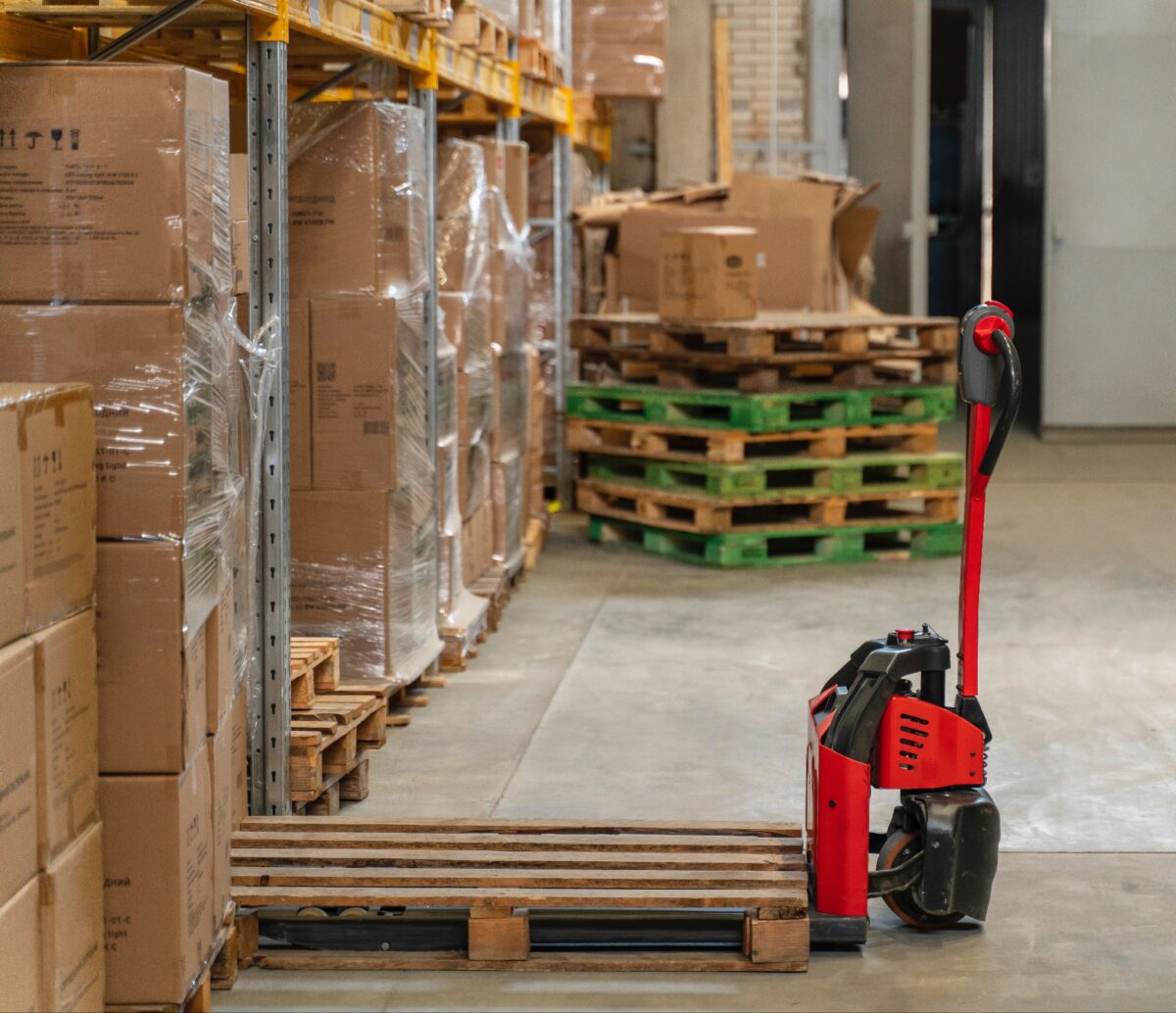In today’s rapidly evolving logistics landscape, professionals in supply chain management, procurement, and transportation face unprecedented challenges. Rising transportation costs, material shortages, and increasing environmental pressure are pushing companies to rethink their logistics strategies. One solution gaining momentum is pallet pooling, a system where businesses share and reuse pallets instead of owning them outright.
But how exactly does pallet pooling address these new logistical challenges?
In this article, we’ll explore how pallet pooling helps reduce costs, optimize logistics flows, and meet environmental demands. For companies seeking to stay competitive in today’s market, it may be the key to overcoming these challenges efficiently and sustainably.
I – Pallet Pooling and Cost Reduction in an Era of Economic Pressure
How Does Pallet Pooling Reduce Logistics and Transportation Costs?
In the current economic climate, logistics and procurement teams are feeling the strain of rising costs. From skyrocketing fuel prices to material shortages, particularly with wood, managing transportation and storage expenses is more challenging than ever. For many businesses, the pressure to maintain profitability while cutting operational costs is a daily struggle.
Is Pallet Pooling a Real Economic Advantage?
Pallet pooling offers a cost-effective solution by shifting from ownership to shared usage of pallets. Instead of investing in a large inventory of pallets and bearing the costs of maintenance, repair, and storage, companies can rent pallets on a per-use basis. This model significantly lowers capital expenditures, and businesses only pay for what they need, when they need it.
The direct impact? Reduced upfront investment and ongoing costs, making operations leaner and more flexible.
Additionally,pallet pooling benefits are numerous. It allows to optimize transportation costs by improving load efficiency and reducing the number of empty pallet returns.
Managing an in-house pallet system often results in excess pallets being transported back to the origin, wasting fuel, time, and money. In contrast, pooling providers ensure that pallets are available at strategic points where they’re most needed. This minimizes unnecessary returns, further reducing transportation costs.
The Cost of Owning vs. Pooling: A Financial Breakdown
Let’s break this down further by looking at the financial comparison between pallet ownership and pallet pooling:
-
Upfront Investment : Purchasing pallets involves significant capital investment. A single high-quality wooden pallet can cost $25-$30, with a lifespan of around 4-5 years, depending on maintenance and use. For a company that needs thousands of pallets, this quickly becomes a large expenditure. Pallet pooling eliminates the need for this upfront purchase.
-
Maintenance and Repair Costs : Pallets are prone to wear and tear, especially in high-use environments like warehouses and distribution centers. The ongoing costs associated with repairing or replacing damaged pallets are often overlooked but can add up quickly. Pooling providers take on these responsibilities, relieving businesses of this financial burden.
-
Storage Costs : Pallet ownership requires companies to have dedicated storage space for unused pallets. This space could otherwise be used for more productive purposes. Pallet pooling eliminates the need for storage, as pallets are returned to the provider when not in use.
In industries where margin pressure is high, and cost efficiency is critical, pallet pooling becomes a clear winner.
Case in Point: A 25% Cost Savings After Adopting Pallet Pooling
Several companies have reported impressive cost reductions after switching to a pallet pooling model. For instance, a leading FMCG company in Europe implemented pallet pooling across its supply chain. Over the course of a year, the company realized a 25% reduction in logistics costs, specifically in areas like pallet storage, repair, and transportation.
In this case, pallet pooling allowed the company to outsource its pallet management entirely, freeing up internal resources and reducing the administrative burden. With fewer pallets to track, fewer repairs to manage, and less time spent on coordination, the company was able to reallocate its internal focus to core business activities, like improving product flow and customer service.
Addressing Supply Chain Disruptions with Pallet Pooling
Another major challenge faced by supply chain managers today is the increasing frequency of supply chain disruptions. From global pandemics to material shortages, unexpected events can cause ripple effects throughout supply networks. Pallet pooling provides a buffer against these disruptions by offering more resilient pallet supply chains.
Pooling providers typically have extensive pallet networks, ensuring that pallets can be rerouted quickly if a specific region experiences delays or shortages. This helps companies maintain continuity in their operations even when external factors threaten to disrupt their supply chains.
II – Optimizing Logistics Flows with Pallet Pooling
How Pallet Pooling Enhances Supply Chain Efficiency
In today’s increasingly complex logistics environment, managing supply chains has become a critical challenge. With the rise of e-commerce, the demand for faster deliveries and the need for multi-channel distribution networks, ensuring the seamless movement of goods is more difficult than ever. Pallet pooling offers a solution by streamlining logistics operations and providing flexible, on-demand access to pallets.
Streamlining Inventory Management
One of the key benefits of pallet pooling is the ability to improve inventory management. Pooling providers ensure that pallets are available at various locations, enabling businesses to quickly respond to fluctuations in demand. This flexibility is essential in industries like retail and FMCG, where spikes in demand—whether seasonal or due to promotions—can cause logistical bottlenecks.
Instead of overstocking pallets in anticipation of demand surges, companies using pooling services can access pallets as needed, reducing the risk of pallet shortages or surpluses. This creates a just-in-time pallet management system, which aligns with lean manufacturing and logistics principles.
Leveraging Technology for Supply Chain Optimization
Pallet pooling supports the integration of modern tracking technologies, such as RFID (Radio Frequency Identification) and IoT (Internet of Things) devices. These technologies provide real-time visibility into pallet locations and movements, allowing companies to track their pallets from the warehouse to the customer and back.
By having access to detailed data, logistics managers can optimize their pallet usage and reduce inefficiencies. For example, by analyzing pallet data, businesses can identify bottlenecks in their supply chain, such as areas where pallets are sitting idle for too long or regions that consistently experience pallet shortages.
The use of these technologies also improves supply chain transparency, which is increasingly important in today’s business environment. Customers and stakeholders expect greater accountability and visibility into how goods are moved. By using a pallet pooling system equipped with tracking technology, companies can provide this transparency, enhancing their reputation and customer relationships.
Reducing Manual Handling and Improving Safety
An often-overlooked benefit of pallet pooling is the reduction in manual handling. Because pallets in a pooling system are standardized and maintained by the provider, businesses can avoid the common problems associated with worn-out or mismatched pallets, such as breakages or pallets that don’t fit properly on automated equipment.
This leads to improved safety for workers, as well-maintained pallets are less likely to cause injuries or accidents. It also enhances the efficiency of automated logistics systems, as standardized pallets are compatible with most conveyor belts, forklifts, and other material handling equipment.
In addition to streamlining domestic operations, pallet pooling is increasingly becoming a critical component of international supply chains. Many companies operating globally face logistical challenges when it comes to managing pallet returns and reusing pallets across borders. Cross-border pooling systems provide a solution by allowing businesses to rent pallets in one country and return them in another, simplifying the process and reducing costs associated with international shipping.

III – Pallet Pooling as a Key Tool for Environmental Responsibility
Reducing Carbon Footprint and Meeting Sustainability Goals with Pallet Pooling
With increasing pressure from governments, stakeholders, and consumers, companies are being held to higher standards of environmental responsibility. Logistics, being a significant contributor to carbon emissions, is an area where businesses are focusing on making improvements. Pallet pooling plays a pivotal role in helping companies reduce their environmental impact.
The Environmental Benefits of Shared and Reusable Pallets
By shifting from single-use pallets to a shared and reusable pallet system, pallet pooling significantly decreases the number of new pallets that need to be manufactured. This leads to a reduction in the consumption of raw materials, particularly wood.
Moreover, pooled pallets are regularly maintained, repaired, and reused, which extends their lifespan and reduces waste. In contrast, companies that own their pallets may end up discarding damaged pallets prematurely, contributing to landfill waste. Pooling providers, on the other hand, have robust repair and refurbishment processes that ensure pallets are kept in circulation for as long as possible.
Efficient Pallet Management and Reduced Emissions
The efficient management of pallet pools also leads to fewer empty trucks on the road. In traditional pallet systems, empty pallets often need to be returned to their origin, contributing to wasted fuel and higher emissions. Pooling providers optimize pallet routes, ensuring that transport is consolidated and efficient. This not only reduces fuel consumption but also helps companies lower their greenhouse gas emissions.
Data-Driven Impact: Cutting CO2 Emissions with Pallet Pooling
Studies have shown that using pooled pallets can cut CO2 emissions by up to 60% compared to companies that rely on owning and managing their own pallets. These reductions are achieved through a combination of optimized transport routes, reduced raw material consumption, and longer pallet lifecycles.
For companies with ambitious sustainability goals, pallet pooling offers a tangible way to make progress. In industries like retail and consumer goods, where supply chains contribute significantly to the overall carbon footprint, pallet pooling has become an integral part of corporate sustainability strategies.
Conclusion
In the face of rising costs, increasingly complex supply chains, and growing environmental pressures, pallet pooling offers a robust, adaptable solution for businesses. By shifting from traditional pallet ownership to a shared, on-demand model, companies can significantly reduce operational costs, improve the efficiency of their logistics flows, and reduce their environmental impact.
For professionals in logistics, procurement, and transport, pallet pooling represents not just a cost-saving strategy, but also a way to optimize supply chains and align with sustainability goals. Whether it’s through the reduction of pallet-related expenses, enhanced tracking and management of inventory, or contributing to a lower carbon footprint, the advantages are clear.
As the logistics landscape continues to evolve, adopting pallet pooling is not only a smart operational decision but also a strategic move toward future-proofing businesses against the ever-growing challenges of modern logistics.
Now is the time to explore pallet pooling as a solution to ensure long-term success in your supply chain.

